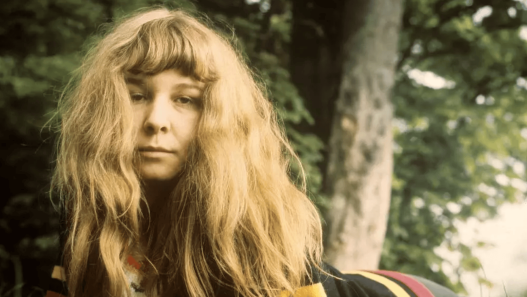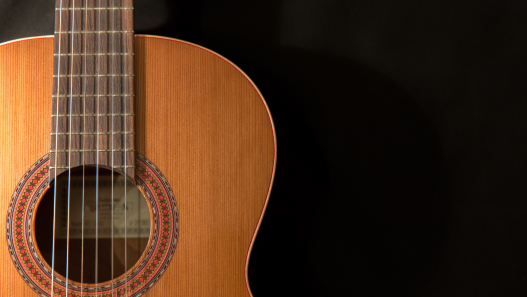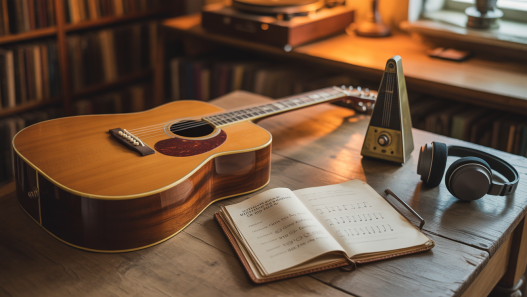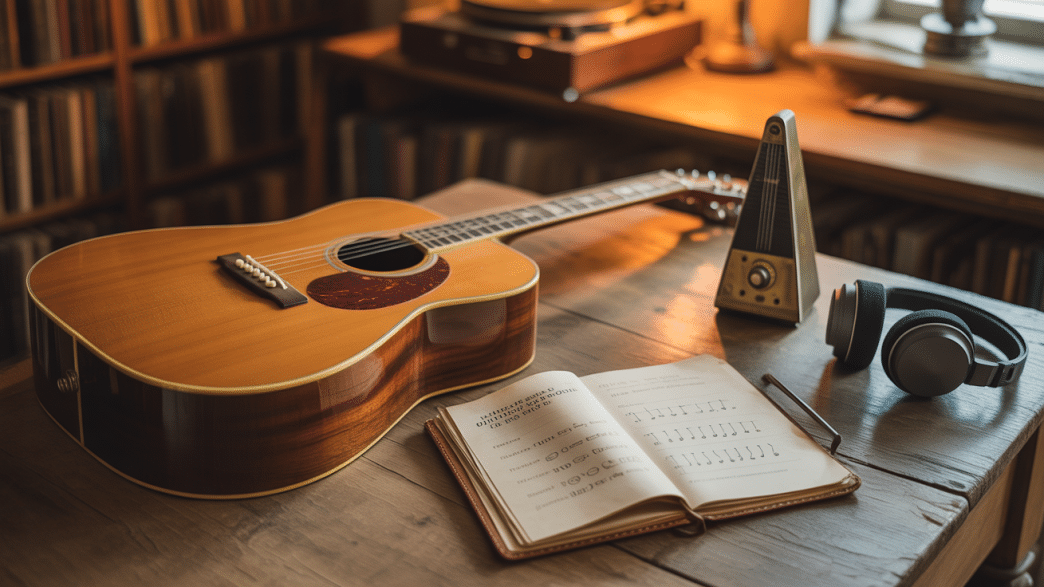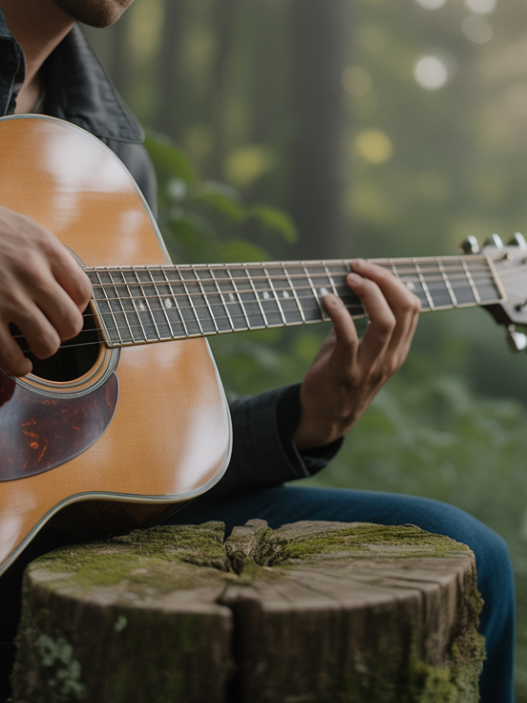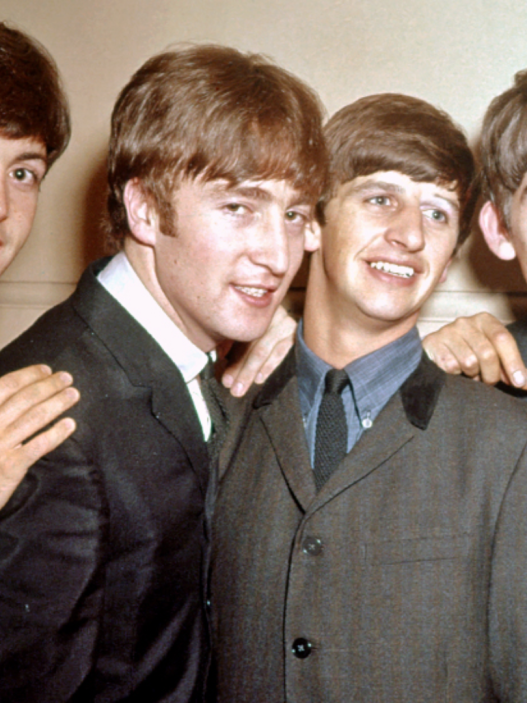Ever sat around a campfire, guitar in hand, and wished you knew those folk songs everyone seems to love? You’re not alone.
Folk music speaks to something deep inside us. It’s music made by regular folks, for regular folks, no fancy training needed.
This guide breaks down the simple chord patterns behind your favorite folk songs.
From the basic I-IV-V progression that powers classics like “This Land Is Your Land” to the minor variations that give “House of the Rising Sun” its haunting feel.
By the end, you’ll have the tools to play dozens of folk songs with just a handful of chord shapes. Ready to make some music?
What Are Folk Song Chords?
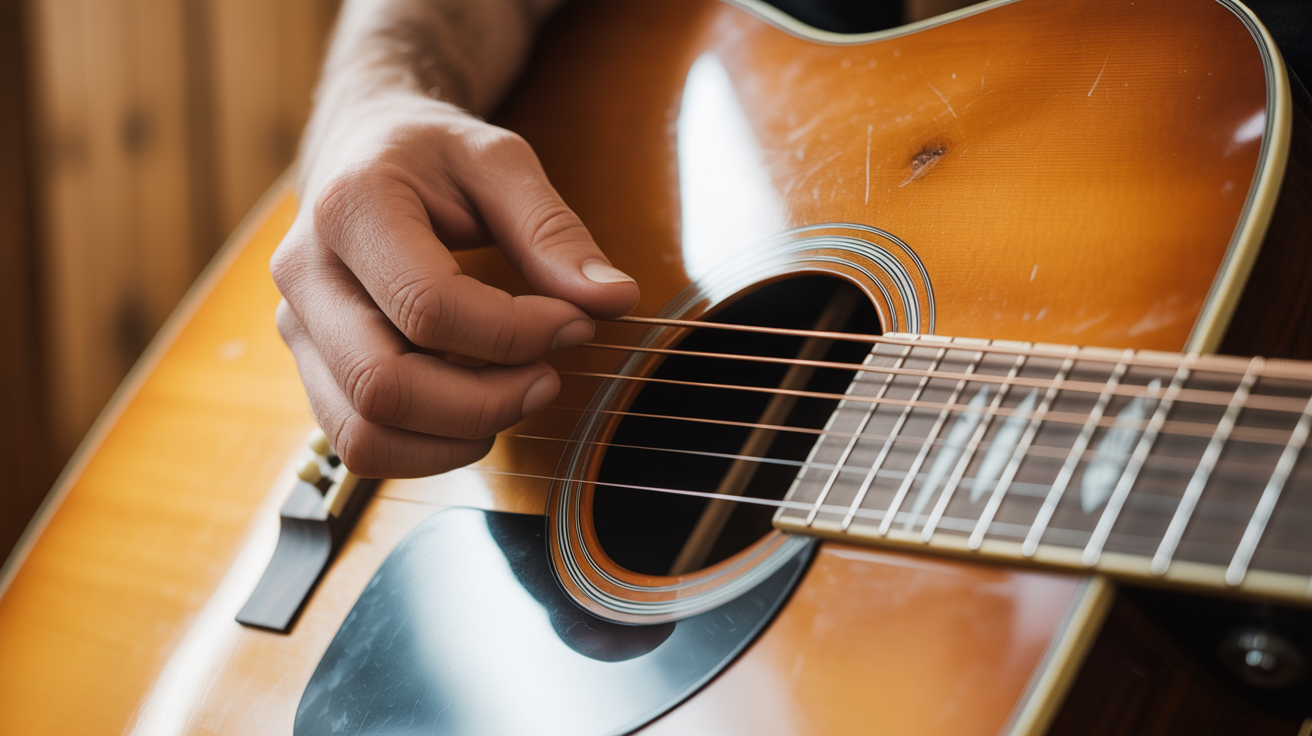
Folk song chords are the building blocks of harmony in folk music. They are typically simple combinations of notes played together.
These chords are often open chords, which means some strings ring out openly, making them easier to play and giving them a warm, natural sound.
Folk music usually relies on acoustic instruments like guitars or banjos, and the chord progressions are straightforward to keep the focus on the story and melody.
This simplicity makes folk songs accessible to many players and listeners alike.
-
A chord is a group of notes played at the same time to create harmony.
-
Folk songs often use simple, open chords that are easy to play on the guitar and other stringed instruments.
-
Open chords allow some strings to ring freely, producing a fuller, richer sound with less finger effort.
-
Acoustic instruments like the guitar, banjo, and mandolin are common in folk music.
-
Folk music favors straightforward chord progressions that support the lyrics and melody.
-
The simplicity of chords helps keep folk songs easy to learn and sing along with.
Common Chords Used in Folk Songs
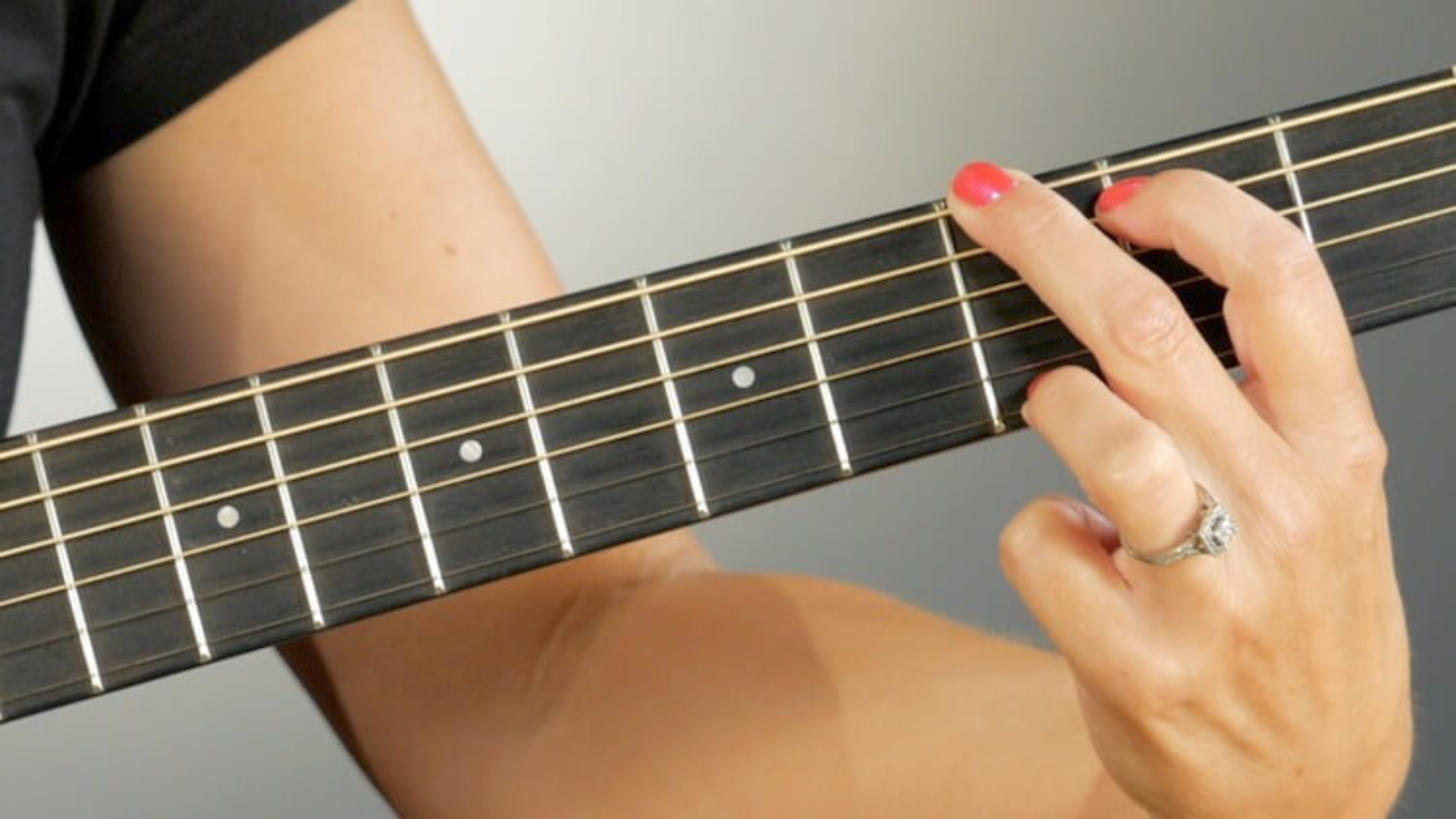
Common chords in folk songs are the foundation for many well-loved tunes. The most frequently used chords include G, C, D, Em, and Am.
These chords are popular because they produce warm, pleasant sounds that blend well together and are easy to play, especially on acoustic guitar.
Their fingerings are straightforward, making them accessible for beginners and perfect for accompanying singing.
These chords also allow for smooth transitions in common folk progressions, helping to keep the music flowing naturally.
-
G major: Bright and open, it often serves as the home chord in folk songs.
-
C major: Warm and full, it pairs well with G and D for smooth progressions.
-
D major: Clear and ringing, it adds a lively tone and works well with G and A.
-
E minor (Em): Adds a gentle, melancholic touch, providing emotional depth.
-
A minor (Am): Soft and reflective, it brings variety and moodiness to folk tunes.
Basic Folk Song Chord Progressions to Learn
Basic folk song chord progressions are simple sequences of chords that sound great together and are easy to play. These progressions give folk music its warm, natural feel and make it easy to learn lots of songs.
Here are three common progressions you’ll see often:
-
G – C – D: This is the classic three-chord progression that’s bright and straightforward.
-
G – D – Em – C: This progression adds a softer, more emotional feel with the Em chord.
-
Em – C – G – D: Starting with a minor chord gives a thoughtful mood before moving to happy-sounding chords.
These patterns help the chords flow smoothly from one to the next, making it easier to sing along and play many different folk songs.
Once you get comfortable with these progressions, you’ll be able to play a wide range of folk music.
How to Play Folk Song Chords on Guitar
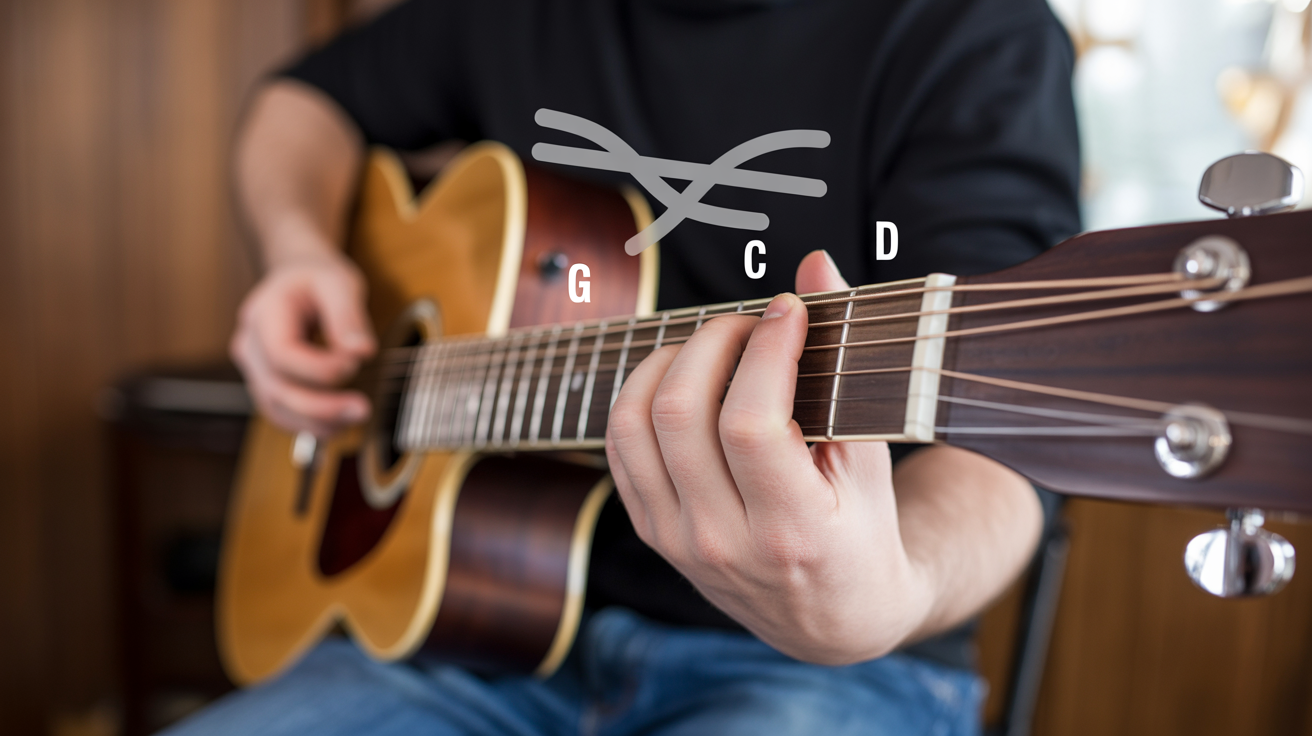
Here’s a simple, step-by-step guide to help you start playing folk song chords on the guitar, even if you’re a beginner. Folk music uses easy chords and straightforward strumming, so it’s a great place to start learning.
-
Learn the basic chords: Start with common folk chords like G, C, D, Em, and Am. Focus on placing your fingers correctly on the strings and frets. Take your time to get each note sounding clear.
-
Finger positioning tips: Use the tips of your fingers, keep them close to the fret, and press firmly but not too hard. Make sure your thumb rests behind the neck for support.
-
Practice simple strumming: Begin with a steady downstroke strum to keep rhythm. Once comfortable, try a down-up pattern to add some flow. Keep your hand relaxed and strum near the sound hole.
-
Switching chords smoothly: Practice moving from one chord to another slowly at first. Focus on lifting and placing your fingers efficiently. Gradually increase speed as you get more comfortable.
-
Use chord diagrams or photos: Visual aids help you see exactly where to place your fingers and how the chords look on the fretboard.
Tips for Singing Along While Playing Folk Chords

Singing while playing folk chords can feel tricky at first, but with practice, it becomes natural and enjoyable.
The key is to keep things simple and steady so you can focus on both your voice and guitar. Using easy strumming patterns helps maintain your rhythm without distraction.
Try to keep a consistent tempo, even if you need to slow down at the beginning. It’s fine to pause or repeat chords while you get comfortable with the lyrics.
Remember, folk music is all about storytelling, so let your voice shine as the chords support your song.
-
Start with slow, steady strumming to keep a solid rhythm.
-
Use simple downstrokes or easy down-up patterns while singing.
-
Practice the chord changes separately until you can switch smoothly without looking.
-
Break the song into small sections, play and sing one part at a time.
-
Keep your tempo steady, even if it means playing slower than usual at first.
-
Please focus on the lyrics and feel, letting the guitar support your voice rather than compete with it.
Popular Folk Songs with Easy Chord Progressions
These songs are great for beginners because they mostly use easy chords and repeat patterns, making them perfect for practice and singing along.
1. Blowin’ in the Wind — Bob Dylan
It uses G, C, and D chords. This classic Bob Dylan song has a steady rhythm and simple chord changes that perfectly fit the folk style.
2. This Land Is Your Land — Woody Guthrie
Uses G, C, and D chords. Woody Guthrie’s famous tune is easy to play and great for singing with friends.
3. Leaving on a Jet Plane — John Denver
Uses G, C, and D chords—John Denver’s gentle melody pairs well with straightforward chords and slow strumming.
4. House of the Rising Sun — Traditional (popularized by The Animals)
Uses Am, C, D, and Em chords. This traditional folk song adds a minor chord for a haunting feel but remains easy to play.
5. Where Have All the Flowers Gone — Pete Seeger
Uses G, C, and D chords—another Pete Seeger favorite with simple progressions and a memorable melody.
6. If I Had a Hammer — Pete Seeger & Lee Hays
This upbeat folk song uses G, C, and D chords. It is fun to play and great for beginners learning chord switches.
7. The Times They Are A-Changin’ — Bob Dylan
Uses G, C, and D chords. Bob Dylan’s anthem uses basic chords that repeat throughout the song, making it beginner-friendly.
8. Puff the Magic Dragon — Peter, Paul and Mary
Uses G, C, D, and Em chords. A beloved folk tune with gentle chords that are easy to pick up.
9. Michael, Row the Boat Ashore — Traditional
Uses G, C, and D chords. This traditional spiritual song features simple progressions and a calming rhythm.
10. Scarborough Fair — Traditional (popularized by Simon & Garfunkel)
Uses Em, Am, C, and D chords—a timeless folk ballad with easy chords and a flowing melody.
How to Create Your Own Folk Song Chord Progressions

Creating your own folk song chord progressions can be a fun and rewarding experience. It’s all about experimenting with the chords you know and creating a progression that fits the mood or story you want to tell.
Here are some basic guidelines to help you get started:
-
Start with familiar progressions: Begin by using the basic progressions like G – C – D or Em – C – G. These are popular in folk music and provide a solid foundation.
-
Try mixing up the order of chords: You don’t have to stick to the same order every time. Experiment with switching the sequence of chords to create new sounds. For example, try using C – G – D instead of the usual G – C – D.
-
Use minor chords for mood: Folk music often combines major and minor chords to convey different emotions. Try adding minor chords like Em or Am to give your song a sadder or more reflective tone.
-
Create a simple repeating pattern: Folk songs often use a repeating chord pattern throughout the verse and chorus. Pick a short progression and repeat it to keep the music flowing smoothly.
-
Play with timing and rhythm: You can adjust the number of beats each chord gets to make the progression feel more dynamic. For example, try holding the first chord for 4 beats, then switch to another chord for 2 beats, and so on.
Essential Tools and Apps to Practice Folk Song Chords

To improve your folk song chord skills, the right tools make a big difference. Many apps and websites provide resources for practicing chords, learning progressions, and maintaining rhythm.
Here are essential tools and apps popular among folk musicians:
-
Chord Apps:
-
Ultimate Guitar: This app offers a huge library of chords, tabs, and sheet music, making it easy to learn new songs.
-
GuitarTuna: This is a great app for tuning your guitar. It also offers chord games to help you practice.
-
-
Metronomes:
-
Soundbrenner is a popular metronome app that helps you stay in time while playing. It is essential for maintaining the rhythm in folk songs.
-
Pro Metronome: Offers a variety of time signatures and tempos to help you practice at your own pace.
-
-
Online Chord Libraries:
-
Chordify: This website and app automatically detects the chords of any song, allowing you to play along with ease.
-
CAGED System Chord Finder: This app helps you learn chord shapes and transitions based on the CAGED system, which is useful for better understanding the fretboard.
-
-
Tutorial Videos and Online Lessons:
-
YouTube: Channels like The Guitar Guru or JustinGuitar offer free tutorials for beginners and advanced players.
-
Fender Play: This is an excellent paid resource for step-by-step lessons and tutorials, with a focus on folk, country, and other acoustic genres.
-
-
Practice Tools for Strumming and Chord Transitions:
-
Strum Machine: A virtual band that helps you practice chords and strumming patterns in time with a backing track, especially helpful for folk music.
-
Yousician: A game-based music learning app that helps you practice chords, strumming, and even singing in time.
-
Wrapping Up
Folk songs bring people together with their simple, heartfelt chords. Now you have the tools to play those timeless tunes that folks have shared around campfires for generations.
Remember, folk music isn’t about fancy techniques or complex theory. It’s about telling stories and connecting with others. The I-IV-V progression might seem basic, but it’s the backbone of countless classics that have stood the test of time.
Please start with the patterns shared here and then make them your own. That’s the true spirit of folk music: taking something familiar and adding your personal touch.
What’s your favorite folk song to play? Drop a comment below and share which chord progression speaks to you. Want more guitar tips? Check out our other guides for more musical inspiration.
Frequently Asked Questions
How Long Does It Take to Learn Folk Song Chords?
For beginners, expect a few weeks to get comfortable with basic chords and switching between them smoothly. Your timeline depends on prior experience and how often you practice.
Can I Play Folk Songs on Any Guitar?
Yes, you can play folk songs on any guitar, but an acoustic guitar is most commonly used for folk music. The warm, resonant sound of an acoustic guitar complements the storytelling nature of folk songs.
Are There Any Folk Song Chords That Are Hard to Play?
Most folk song chords are simple, but some beginners may find certain chords like F major or barre chords a bit challenging at first. As you continue practicing, you’ll find that these chords become easier to play over time.




